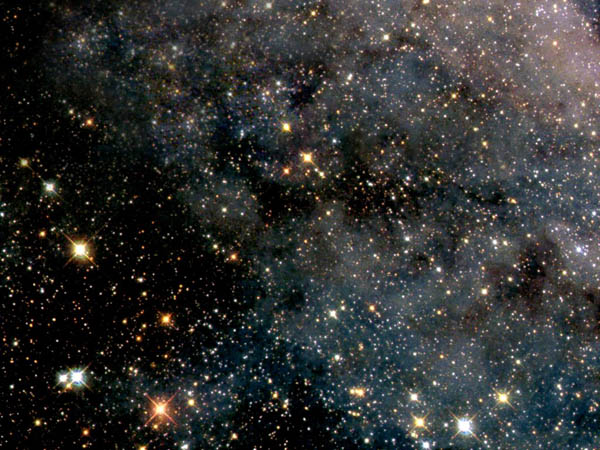
One of the greatest challenges for the human kind
is to prove that we are not alone in the universe.
RADIO CONTACT WITH OTHER
CIVILIZATIONS IN THE COSMOS!
(2006)
KLIK HIER VOOR DE NEDERLANDSE VERSIE

One of the greatest challenges for the human kind
is to prove that we are not alone in the universe.
First some calculations...
When looking at practical considerations, the frequency range between 1000 MHz and 2000 MHz is a very realistic choice. Here you will find the often mentioned "water hole". The water hole is the frequency range from 1420 MHz to 1721 MHz between the emission of H and OH and where the cosmic background radiation is also very low. The path loss is not as high as at higher frequencies and the mechanical construction of the parabolic antenna to get the required accuracy is not as difficult as on higher frequencies. Frequency stability is not too much influenced by the atmosphere and other things.
As a start we will take a bandwith of only 10 Hz. This is the minimum bandwidth that is necessary to transmit some pictures per day.
An acceptable transmit power is 1 Megawatt, that is 90 dBm.
It is not too difficult to make a parabolic antenna of 100 meter diameter, it has a gain of approximately 60 dB or one million.
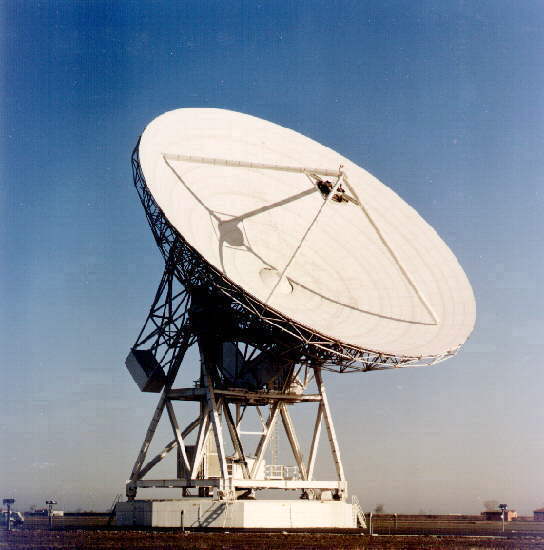
Large antenna's, sensitive receivers and very much power!
The antenna gain at both sides is 60 dB. The maximum path loss is the difference between the transmit power of 90 dBm and the minimum required power of -175 dBm at the receiver input or -265 dB. It is simple to calculate that we can communicate over distances of 30 to 50 lightyears! Unbelievable, you have to fly 30 million to 50 million years in a modern airplane to travel that distance!
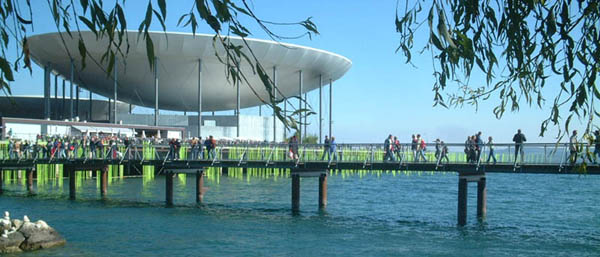
One single picture from another civilization
contains already much information about them!
How is it over there?
We should communicate with pictures. Pictures do show very quickly how it is over there. Their world will be quite similar to ours. They will have a head, eyes, ears, hands and feet. They will also have cars, airplanes, clothes, houses and weapons. But they will also have many strange, unusual things and strange traditions. We do not have to worry that they will ever visit us. That is impossible due to the large distance.
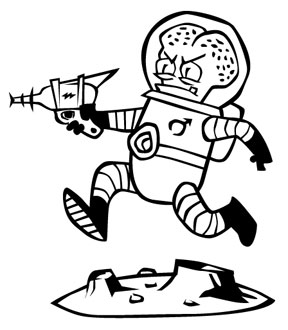
They will have a head, eyes, ears, hands
and feet. And weapons...

|

|

|
| Are they intelligent forms of life? Pictures do explain much but not everything! | ||
The transmitters
A transmission has to be quite long, at least a few days. When a beacon transmission is found, there has to be sufficient time to decode it. Then there has to be enough time left to decode many pictures. In 3 days, we can tramsmit already many pictures to a civilization. With 5 radio telescopes of 100 meter diameter, we can do that a few times per year per selected star. Of course, we do not always transmit the same pictures so that they will continuously receive new information. The transmit frequency is corrected for the rotation of the earth (and they will do that for the rotation of their planet) to avoid problems with the doppler shift at the reception side.
How much money
One billion euros per radio telescope, so 10 billion euros. That seems a lot. But it is only a minor part of the defense budget in the world. So money is not a problem.
Why didn't we make radiocontact?
Why did we not make already contact with one of those civilizations? Are all those other civilizations too primitive yet to make radio contact? No, the problem is that there are perhaps not so many civilizations in the universe, perhaps only 1 trillion. But 1 trillion, that are very many civilizations, that is 100x more than there are people on earth! However, when we talk about the universe, we do also talk about huge figures. The sun is a normal star that is very close to the earth. The light travels only 8 minutes over that distance. But the next star is already at a distance of 4 lightyears. You have to fly 4 millions year in a modern airplane to travel that distance! The universe is so incredibly large, that everything has to exist somewhere. When there would be a universe-newspaper, then the sudden destruction of 1 million stars (suns like ours) would not be important enough for publication!
From cosmic scale to earthly scale.
Our 1 Megawatt transmitter with a parabolic antenna of 100 meter diameter has the incredible large range of even 30 to 50 lightyears. That is 30 to 50 million years flying in a modern aeroplane!!! But is that range really so large when looking at a cosmic scale?
Unfortunately, we cannot make any impression about the size of the universe. When we want to do that, we have to transform it to more earthly proportions. We can compare earthly things with each other. That transformation is possible by letting the universe (diameter 15 billion lightyears) shrink till it is just as large as the earth (diameter 12000 kilometers). Still quite large, it is more than one day flying to the other side of the earth. But how small is that large range of 30 to 50 lightyears of our 1 Megawatt transmitter then? Only 2 centimeters, or the size of a tennis ball, so very small!
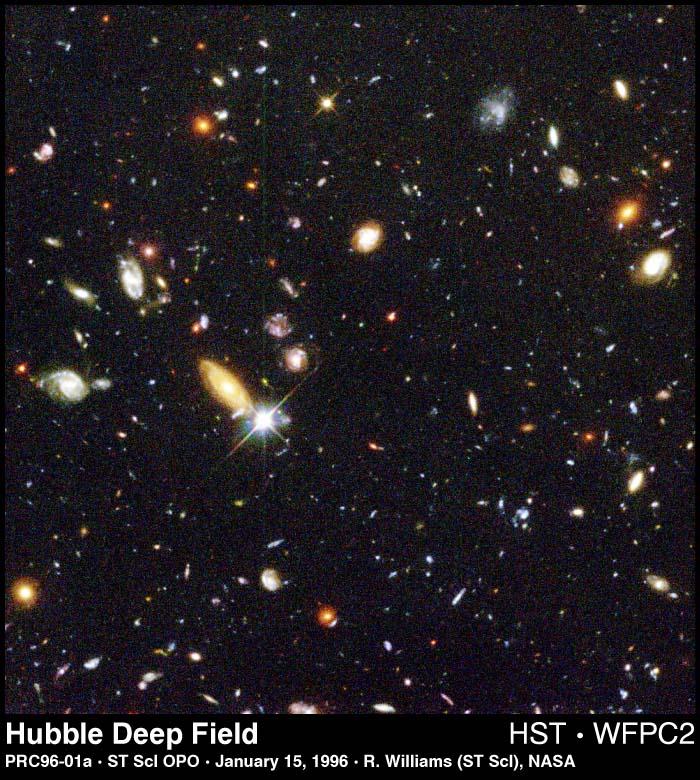
The universe is incredibly large. Here a very small piece of the sky.
Every light spot, even the smallest ones, is a star nebula with 100.000.000.000 stars.
There is so much and it is so large that everything exists somewhere!
Conclusion:
There are much more civilizations in the universe than there are people on earth. We cannot prove it but that has to be so because of the incredible size of the universe. But because the universe is so incredibly large, there is only a very little chance to make radio contact, as the closest civilization will be too far away. We do only have a very small chance if there are countless more civilizations in space than 1 trillion. And nobody knows if that is so!
Nevertheless, we certainly have to try to make that radio contact. After all, we always buy a lottery ticket every month!